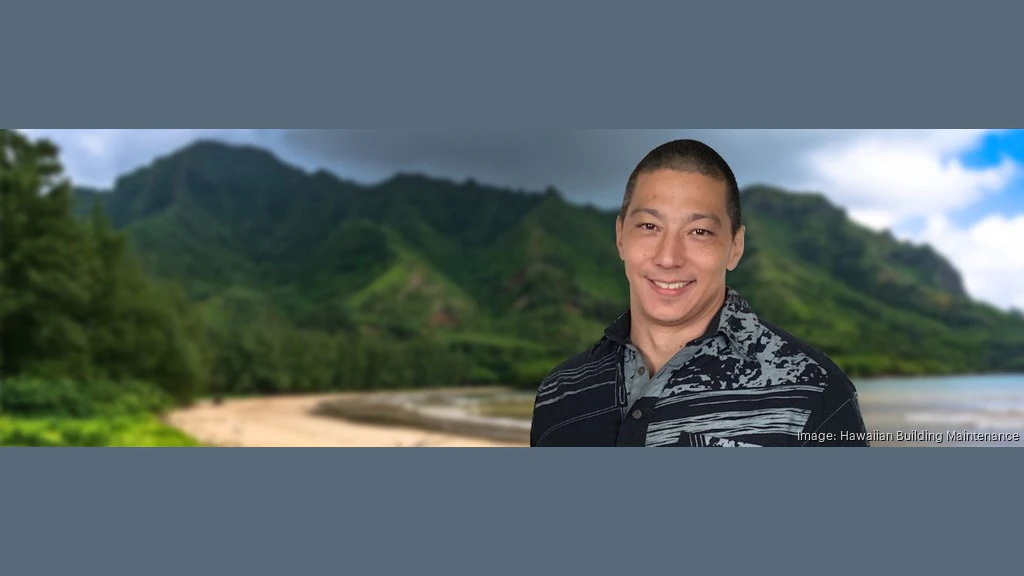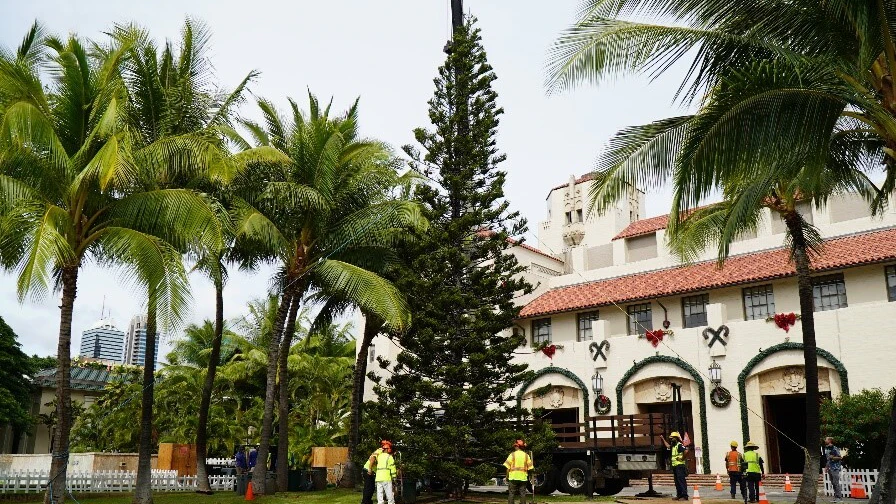The lights of the city can be blinding — and especially disorienting if you’re a seabird leaving the nest for the first time.
We’re in the midst of seabird fallout season, the time of year when young seabirds — like fledging ‘ua‘u, or Hawaiian petrels, and ‘ua‘u kani, or wedge-tailed shearwaters — taking their first flights from their burrows to the ocean can become disoriented by artificial lights and fall to the ground, making them “vulnerable to predators and car strikes,” the Hawai‘i Wildlife Center says.
HWC — one of two organizations permitted by state and federal wildlife agencies to provide medical treatment and rehabilitation care to native wildlife — often cares for these downed birds.
Fallout is expected to spike with the new moon on Nov. 19, which brings with it darker skies.
“New moons increase the likelihood of downed seabirds during fallout season,” the nonprofit said in a Nov. 11 announcement. “This year, ‘ua’u kani fallout is expected to peak in mid- to late-November. Last year HWC’s O‘ahu Seabird Aid Program treated 645 ‘ua‘u kani.”
In fact, it recently treated its 6,000th patient, an ‘ua‘u that was found on the water off Lāna‘i by Cascadia Research Collective, says Linda Elliott, HWC president and center director.
Longtime partners Pūlama Lāna‘i provided the initial care and transferred the bird to HWC’s Hawai‘i Island facility, she told Aloha State Daily.
Staff provided a full exam and assessed the bird’s condition before working on nutritional support and monitoring behavior. The ‘Ua‘u was released on Nov. 3.
ASD recently spoke with Elliott about the center, its work and what people should know about the seabird fallout season.
Hawai‘i Wildlife Center
HWC was founded in 2006, a purpose-built veterinary, medical and wildlife rehabilitation center.
The organization is licensed and permitted for both the veterinary and rehabilitative care for all “native wildlife that is winged,” Elliott says. That includes native birds as well as the Hawaiian hoary bat.
A graduate of Kalāheo High School on O‘ahu, Elliott says she had a passion for wildlife and earned a degree in wildlife biology, starting at the University of Hawai‘i at Mānoa before transferring to Arizona State.
After she returned to the Islands, she worked for the Honolulu Zoo for six years. There, Elliott says she worked with reptiles, birds and mammals, and eventually ran the zoo hospital.
She made the move to Hawai‘i Island in 1988 and for five years ran a multi-island wildlife rehabilitation program under the Hyatt Hotel system, using resorts on each island to do that work.
“That was because there was such a need,” Elliott says. “Here we are, the endangered species capital of the world, and we had no purpose-built facilities.”
In 2008, two years after HWC was founded, Elliott said construction began on its hospital. That was finished at the end of 2011.
Currently, the organization has a staff of 11.
According to Elliott, its main facility is a 4,500-square-foot hospital and rehabilitation center on Hawai‘i Island but the center also has a clinic at the Honolulu Zoo and a stabilization site on Lāna‘i, along with partnerships with veterinarians on Maui and Save our Shearwaters on Kaua‘i.
“We have a small staff doing a large area and a large number of patients daily,” Elliott notes.
Doing critical work
It’s a critical resource, she told ASD.
“Hawai‘i is known as the endangered species capital of the world, also the extinction capital,” Elliott explains when asked why it’s important for HWC to help care for and rehabilitate these native animals. “We have lost so many native bird species and the ones remaining are at risk of extinction as well.”
And in her work as an emergency responder — Elliott says she’s worked with oiled wildlife after 18 oil spills in six countries — her worst experience was in Hawai‘i “because we didn’t have a facility to work from and every other state has wildlife rehabilitation centers. That was the biggest motivation to fill that need. Since we built it, we’ve exceeded my expectations.”
She figured they’d get a few hundred patients a year but now sees over 1,000 annually.
When we spoke with Elliott, HWC was just shy of treating its 6,000th patient. As the nonprofit approached that milestone, she said she was in awe.
“I didn’t expect to have it happen as fast as it has,” she told ASD. “I’m proud of what we’ve done and the number of native birds and bats we’ve been able to treat and get back out into the wild with the best chance of a second chance at life in the wild and helping with the conservation of these species. Our team has made it happen. Our wildlife care team has worked seven days a week, year-round. We’re always open to care for the native wildlife and that’s our priority. I’m proud and amazed at what we’ve accomplished in this time and the demand just continues to grow. There’s no slowing down. It’s actually picking up speed, if anything.”
Treating the animals
“It takes a whole community,” Elliott says.
The public is key in the first steps of rehabilitating the native animals, serving as "the eyes out there," but state and federal wildlife agencies as well as researchers finding sick or injured wildlife while working in the field also play a role.
The public also plays a “huge role” in getting the wildlife patients to HWC’s facilities on each island. A program called Wheels for Wildlife, for example is “essentially a bird taxi,” Elliott says, where volunteers on each island help transport the animals between islands and facilities.
Once an animal arrives, “that’s when our wildlife team kicks in,” she explained. They do an intake physical exam of the animal, checking for injuries, trauma, feather and body condition, and overall behavior before setting up treatment and doing other assessments as well as conditioning. A pre-release exam is the final step before a bird or bat is released.
“That’s part of rehabilitation,” Elliott says. “We watch to see that they actually are feeling comfortable being released, that they take off well and that there are no issues. That’s the last step before they’re back in the wild. Unlike working with domestic animals, they don’t show any joy in being around us. They’re afraid and I always say they’re not able to understand what’s happening to them or why they’re here, so we minimize their stress as much as possible, minimize our contact with them and efficiently move them through the process to get them back into the wild.
“When they fly off, that’s our biggest joy,” she continued. “We don’t get to hold and cuddle and see tails wag or get licks or anything like that. Our joy is when we see them fly off and be wild again.”
And that’s the goal: to get the animals reintroduced into the wild, to continue to breed and grow their populations, and to minimize any suffering, Elliott says.
“A lot of the reasons we get them is human cause,” she explained. “We’re able to help mitigate for our footprint in the environment. The things we do that cause them to become injured or orphaned is what we’re here to help. And then we can help educate … the public on learning how to be good neighbors and part of the solution and live in harmony with nature as much as possible.”
Good neighbors
There are “a lot of great ways” to be a good neighbor to Hawai‘i’s native wildlife, Elliott says. A big one: keep an eye out for sick, injured or orphaned native birds and contacting HWC if you find one.
A common misperception is that sometimes birds don’t really need professional rehabilitation and people think they can tend to the animals on their own.
“In fact, it’s illegal for anybody without a permit or a veterinary license to care for native wildlife. That’s because there is so much involved ... in what happens to these birds and having the expertise and the facilities to do it correctly minimizes the unintentional damage to the bird,” Elliott notes.
Other tips:
- Be careful when driving — birds of prey like owls and hawks can cross the roads.
- Clean up your fishing gear so birds aren’t inadvertently hooked.
- Minimize nighttime light pollution during seabird fallout season — turn off unnecessary lights outside and close your curtains. Elliott says dark skies are critical for seabirds fledging for the first time at night and flying out to sea.
Aside from light pollution, seabirds also face a myriad of other challenges. According to Elliott, because they nest on the ground, they’re vulnerable to predators like mongooses, cats, dogs and rats. They can also get entangled with fishing line, ingest plastics, face contaminants on the water and are facing changing weather conditions.
Hawai‘i Wildlife Center is a nonprofit organization. Elliot says a majority of its funding comes from individual donors and foundation grants. Donations can be made and wishlists can be found here.
Learn more about HWC here.
So, you find a downed seabird…
Seabird fallout season happens each year, roughly between Sept. 15 and Dec. 15. In addition to the ‘ua‘u kani and ‘ua‘u, you're also most likely to encounter the ‘a‘o, or Newell's shearwater, and the ‘ou, or Bulwer's petrel, according to the state Department of Land and Natural Resources.
HWC says the public should transport downed seabirds on O‘ahu to Feather and Fur Animal Hospital, 25 Kaneohe Bay Dr. #260 in Kailua. Use a lightweight towel or T-shirt to gently pick up the bird and place it in a cardboard box.
If you’re unsure about the species or best handling practices, contact Hawai‘i Wildlife Center before intervening at 808-884-5000 or email a photo to birdhelp@hawaiiwildlifecenter.org.
HWC says that ‘Ua‘u kani may still be in or near their burrows getting ready for their first flight out to sea, so if you see a fluffy chick and aren’t sure if they need help, contact HWC before stepping in.
Find additional drop-off locations and hours at the Department of Land and Natural Resources website. If you’re unable to transport a bird, HWC may arrange alternative transportation through its Wheels for Wildlife volunteer program or other approved response organizations, but it may delay care.
For the latest news of Hawai‘i, sign up here for our free Daily Edition newsletter.
Stephanie Salmons can be reached at stephanie@alohastatedaily.com.





